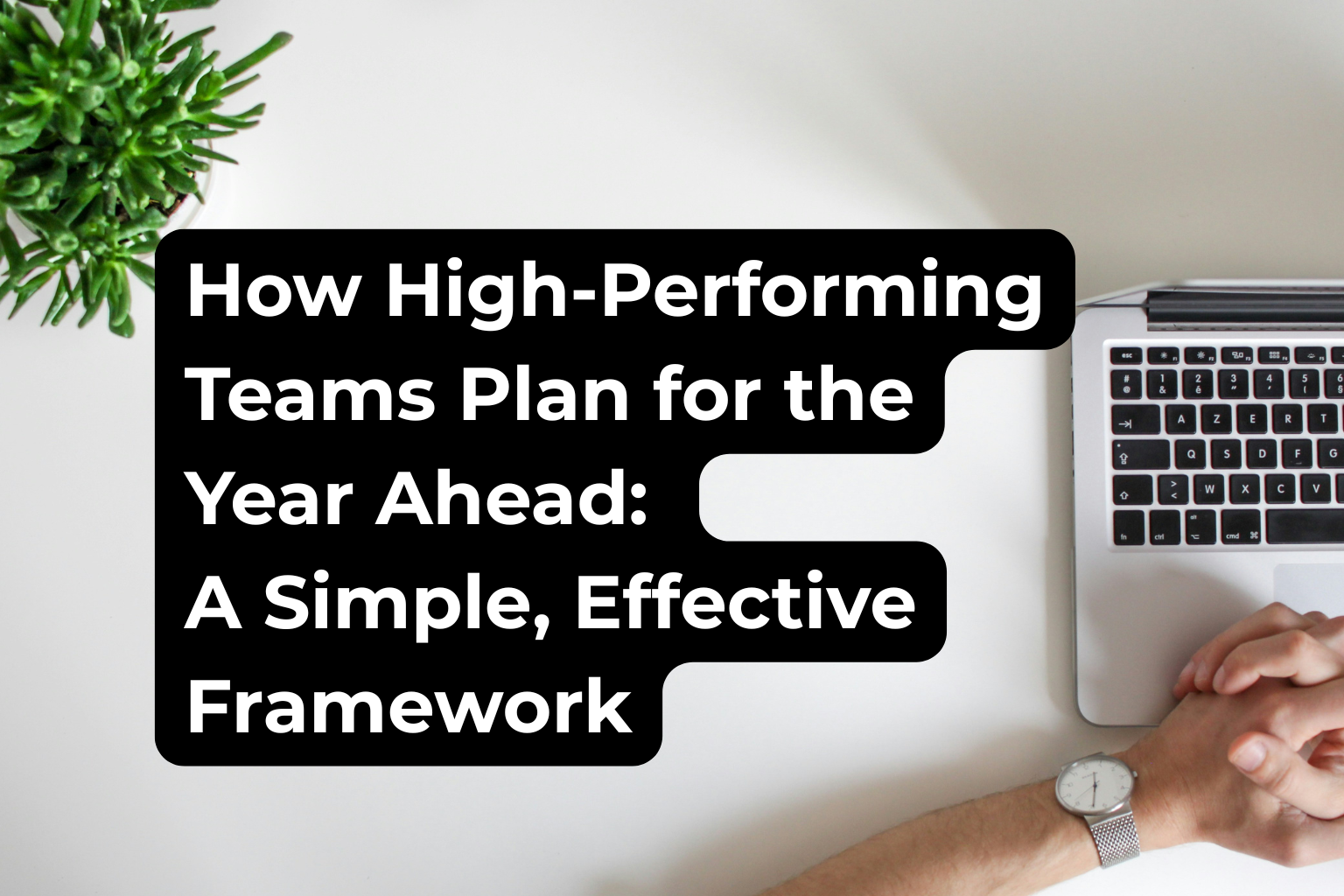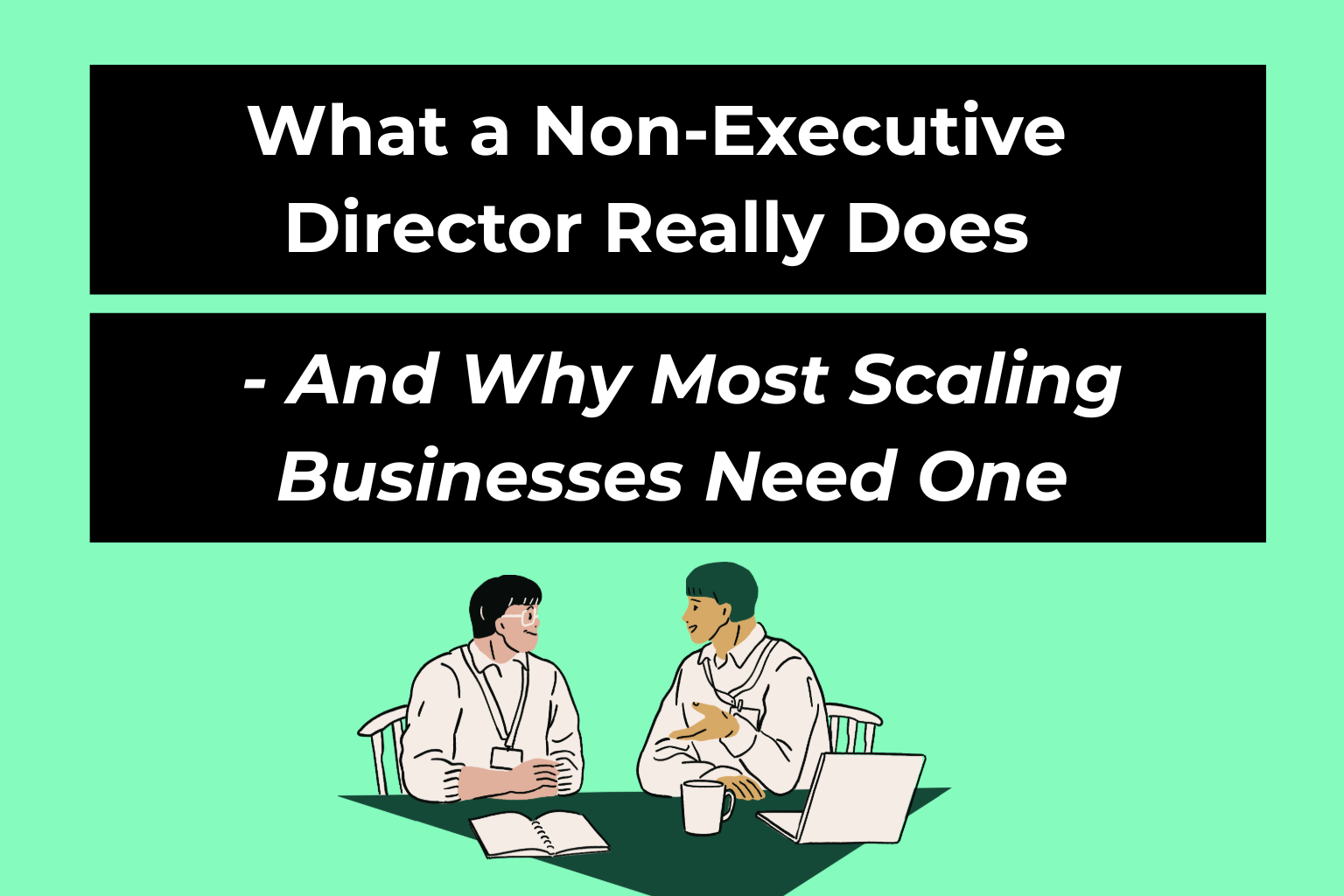Growth is a complex problem to solve.
Unpicking where to really prioritise time and effort is incredibly difficult when there are 1001 things to do and demands on your time.
Seeing the wood for the trees becomes all but impossible at time.
Simplicity wins
We have always been fans of distilling challenges down to their most simple elements. It’s a cornerstone of our approach to growth consultancy and a way to create space for strategic thinking by removing the ‘noise’ of day-to-day business.
We use the same technique when creating annual strategic plans for the service and SaaS businesses we work with, ensuring we plan across the four key areas of the business that matter and then ensuring there is a consistent plan to consistently improve all of those areas in unison.
And this approach can REALLY help you think logically about sales approach too.
Sales strategy
With so many options and way to reach your chosen target ICP (ideal customer profile) it can be daunting to define a ‘right and best approach’ to revenue growth, especially during times of intense need.
It’s when you need quick revenue that the pressure to find creative ways of doing it are felt most. But equally, it is that pressure cooker that inhibits your ability to isolate the problem and think of ways to solve it.
And it’s here that simplicity frameworks like this come in.
Whilst you will undoubtedly already have a well-crafted, always-on’ sales and marketing strategy for your business the questions really come when you experience a dip in revenue or begin missing target.
This is when extra, often short-term tactics are needed for immediate impact.
Keep it simple, stupid!
And this is where you should focus in on one or more of the only three growth levers you really have, irrespective of whether you are a SaaS or service business leader.
- Increasing new business volume (and/or conversion)
- Decreasing time to value
- Increasing lifetime value.
Why these things and what do we do about them? Let’s look at each in turn:
Increasing top of funnel opportunity (ONE)
The most obvious place to turn is to turn up ‘new business’, get more leads in and win that way but for short term needs this can be a mistake. Time to value (we’ll come to that) is often measured in months not weeks when it comes to ‘new’ as trust must be built, proposals created and on boarding completed before we see any impact to revenue.
It is critical to building long term value of course and this is where your strategic sales and marketing plan should focus.
Conversions
Married to this is then your ability to convert ‘new’. In the panic to acquire leads this is very often an overlooked metric and one which can provoke Emu-syndrome internally. Often sales and pitch teams will bury their head when it comes to accepting there is a conversion problem and so sustained effort here can yield big rewards once a culture of transparency is instigated and egos leave the room.
Exactly how you do this is very much dependent upon the unique circumstance and sector the business focuses in on.
If you are an agency style business, then often it means organise a ‘war room’ to carefully dismantle current pitch decks to rebuild them fitter for now and the competition they face. Often this means injecting more relevant, useful insight and making the pitch much more focused on the prospect client’s pain.
For SaaS businesses it means jumping into the customer journey data to understand where the drop offs are and building everything from content to support decision making and to help with comparisons to changing how pricing or trials work.
Decreasing time to value (TWO)
Where you can create short term impact though is in the process of completing the work (if you’re a service business like an agency) or shortening things like free trial periods or billing cycles (if SaaS) can make a HUGE difference.
Agencies in particular can massively benefit from this, especially if a lot of the work is project based. By simply getting in place tighter contracts or Service Agreements you can ensure that delays are minimised on client side, and you can often reduce completion time by a third or more. This means more time to upsell (more on this in a second!) and more hours available for more work more quickly.
Increasing lifetime value (THREE)
Finally, we come to perhaps the most misunderstood and undervalued element of the short-term revenue opportunity mix; and that’s the subject of LTV or upsell/cross sell to break it down into its constituent practical parts.
Sure, you can improve on LTV at initial sales stage, and you can make a big difference through retention efforts with great customer service etc but where you REALLY win – and can control the timing and impact of that activity much more – is in selling more to the client base you have proactively.
I can squarely pitch this as the key reason for our growth as an agency from £5m top line to more than £20m!
As a SaaS business this is about building out a great customer success team and process, from designing great pain point content and help content to ensuring that on boarding is well managed and that customers can communicate with you easily.
Four key areas of focus in these kinds of businesses are:
- Customer Success Programs: Implement robust customer success programs to ensure that your customers are getting the maximum value from your SaaS product. Provide onboarding assistance, proactive support, and regular check-ins to address any issues or questions. A satisfied and successful customer is more likely to renew their subscription and may even upgrade to higher-tier plans.
- Personalisation and Upselling: Leverage data analytics to personalise the user experience. Understand your customers’ usage patterns and preferences and use this information to suggest relevant upsells or additional features that align with their needs. Offering personalised recommendations can lead to increased customer satisfaction and higher lifetime value as customers expand their usage of your product.
- Continuous Improvement and Updates: Regularly update and enhance your SaaS product to keep it competitive and aligned with market demands. Introduce new features, improvements, and innovations that add value to your customers. This not only helps in retaining existing customers but also provides opportunities to upsell, as customers may be enticed by the prospect of accessing new and improved functionalities.
- Tiered Pricing and Expansion Revenue: Implement tiered pricing models that encourage customers to upgrade as their needs grow. By offering scalable plans, you allow customers to start small and then easily move to higher-tier plans as their requirements evolve. This not only accommodates their changing needs but also increases the revenue generated from each customer over time.
And likewise for agency-style businesses upsell can be a very powerful short-term tool to revenue uplift.
Developing effective processes to be able to do this strategically though is tough. It requires you to build out an account management function focused on, and capable of delivering, more commercial value and not just project manage.
This was the hardest thing to scale from my own experiences of growing such a business past 150 people.
Exactly how to do that is the subject of a much longer guide (coming soon!) but for now here are some of the tactics worth building into your approach to client services:
- Client Segmentation (tiering): Divide your client base into segments based on their needs, preferences, and usage patterns. Tailor your upselling strategies to each segment, ensuring that your offerings align with their specific requirements. This personalised approach increases the likelihood of success in upselling efforts.
- Regular Client Reviews: Conduct regular reviews with clients to discuss their current needs, goals, and challenges. Use these sessions to identify opportunities for upselling additional services or features that can help them achieve better results. A proactive approach to understanding your clients’ evolving needs is crucial for successful upselling.
- Educational Content and Training: Provide educational content and training sessions that showcase the value of your agency’s additional services. Demonstrating how these services can enhance the clients’ outcomes will make them more receptive to upsell opportunities. This could include webinars, workshops, or informative guides that highlight the benefits of specific offerings.
- Strategic Account Managers: Assign dedicated account managers to clients who serve as strategic partners. These managers can closely monitor client accounts, understand their objectives, and identify areas where upselling additional services can add value. Having a point of contact who understands the client’s business deeply can facilitate effective upselling discussions.
- Performance Metrics and Reporting: Develop clear performance metrics and reporting systems to showcase the impact of your agency’s services. Highlight the success stories and key performance indicators (KPIs) achieved through your current services. When clients see the tangible results, they may be more open to exploring additional services that could further enhance their outcomes.
- Bundle Services and Discounts: Create bundled packages of services that offer additional value at a discounted rate. This can incentivise clients to upgrade their plans or add supplementary services. Bundling is an effective way to make upsell propositions more attractive while providing clients with a cost-effective solution.
- Automated Upselling Campaigns: Implement automated email campaigns or in-app notifications that strategically promote upselling opportunities based on client behaviour, milestones, or usage patterns. Use personalised messaging to communicate the benefits and added value of the proposed upsell.
- Feedback Loops: Establish feedback loops with clients to gather insights into their experiences and satisfaction levels. Use this information to identify areas for improvement and upselling opportunities. Clients who feel heard and supported are more likely to consider additional services from an agency.
By incorporating these strategies into your agency’s processes, you can create a systematic and client-focused approach to upselling that not only increases revenue but also strengthens the overall client-agency relationship.



